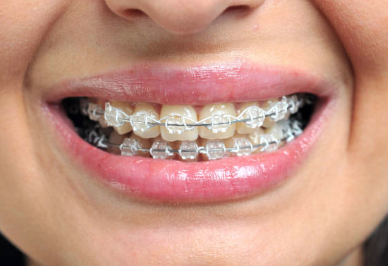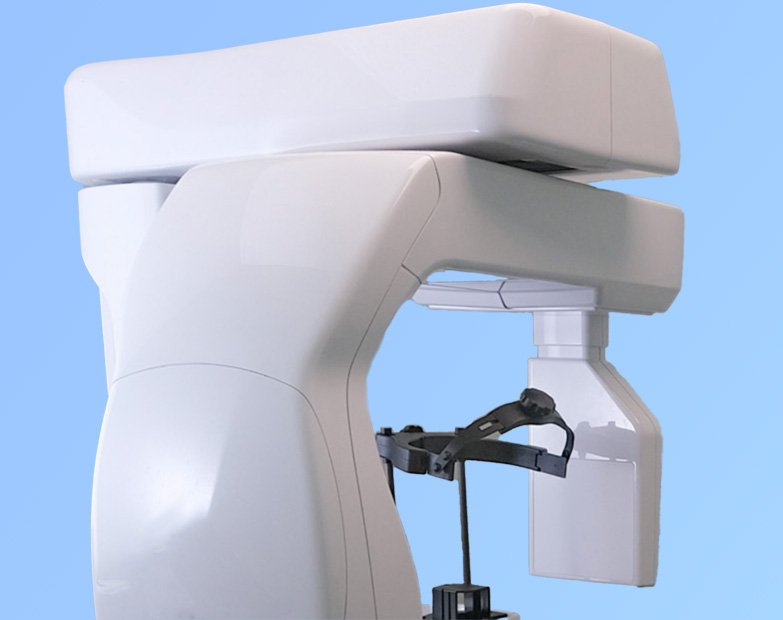
Orthodontic technology has made significant strides, offering patients more discreet and comfortable options for achieving a perfectly aligned smile. At London Dental Specialists, Dr. Ope Sodeinde and his team of GDC registered Specialist Orthodontists will guide you to your ideal orthodontic solution, with a focus on Invisalign treatments at our state-of-the-art clinic in London UK. Unlike traditional metal braces, Invisalign uses a series of clear removable aligners to gradually straighten teeth, providing a nearly invisible alternative. Our advanced 3D imaging technology allows for precise treatment planning, while our experienced specialists ensure optimal results in a shorter time frame compared to conventional orthodontic methods. With Invisalign, you can achieve a beautifully aligned smile without the inconvenience and appearance of traditional braces.
All of our dentists are specialist dental experts, all registered with the GDC, and our Invisalign & Orthodontic dental treatments are all approved under BDA, GDC and UK standard guidelines.


Invisalign and orthodontic treatments are advanced solutions for straightening teeth and correcting bite issues without the need for traditional metal braces. Invisalign uses a series of clear, removable aligners custom-made for your teeth, while modern orthodontic options include ceramic braces and lingual braces that offer discreet alternatives to traditional brackets and wires. These innovative treatments not only enhance your smile's aesthetics but also improve oral health by correcting misalignments that can lead to jaw pain, uneven wear, and difficulty cleaning.
At London Dental Specialists, we're proud to offer a comprehensive range of Invisalign and orthodontic solutions tailored to meet the unique needs of each patient. Our team of GDC-registered orthodontic specialists brings over two decades of experience in crafting beautiful, healthy smiles. We provide cutting-edge treatments including Invisalign, ceramic braces, and accelerated orthodontics, ensuring that every patient receives the most effective and efficient path to their ideal smile. Our expertise extends to complex cases, including bite corrections and preparations for restorative work.
We've successfully transformed thousands of smiles across London, earning a reputation for excellence with our high success rates and hundreds of 5-star patient reviews. Our state-of-the-art clinic combines the latest orthodontic technology with personalised care, making your journey to a straighter smile comfortable and predictable. Whether you're seeking subtle corrections or major transformations, our specialists create customized treatment plans with flexible payment options to suit your lifestyle and budget. Book your complimentary consultation today and discover why we're trusted as London's leading orthodontic centre, where patients consistently rate us 5 stars for our expertise, care, and outstanding results.
We understand that choosing orthodontic treatment is a significant decision, which is why we take the time to thoroughly explain every aspect of your care. From your initial consultation through to completion and retention, we're committed to providing clear communication and support. Our patients appreciate our attention to detail, the comfort of our treatments, and the life-changing results we achieve. Join our growing family of satisfied patients who have gained confidence and improved their oral health with our advanced Invisalign and orthodontic solutions.
Our comprehensive Invisalign and orthodontic treatments are for people of all ages in London and anyone seeking orthodontic care in the UK, or even internationally. We believe that everyone deserves a confident smile and proper bite alignment. That's why with our expert orthodontists, we provide personalised care and have the experience and expertise to address any type of orthodontic issue using the latest Invisalign technology and traditional braces options. We're committed to creating beautiful, healthy smiles through comfortable and effective teeth straightening solutions.

You can feel welcome and safe choosing London Dental Specialists for your Invisalign & Orthodontics. You have a full team of dental specialists behind you with a periodontist, orthodontist and endodontist which enables us to take care of your entire smile with any dental procedure necessary for your perfect smile. Some of our benefits you have with choosing us for your Invisalign & Orthodontics are:
Feel welcome to ask us any questions you may have about our Invisalign & Orthodontic, and we can set up a consultation for you with our dental specialists to help educate you and personally analyze your need for our treatments.






Invisalign® First, offered by London Dental Specialists, is a cutting-edge orthodontic treatment designed specifically for growing children's teeth. This innovative system uses clear aligners to address malocclusions in primary and permanent erupting dentition, providing a convenient and aesthetic alternative to traditional braces. Custom-made aligners gently guide tooth positioning, correcting issues such as crowding, spacing, and protrusions while promoting proper dental arch form and development. The expert orthodontist at London Dental Specialists utilises this advanced technique to improve smiles and facilitate arch expansion in young patients, ensuring optimal results as their teeth continue to grow. Invisalign® First offers a comfortable and removable solution for early intervention, setting the stage for healthy, well-aligned teeth in the future.




SureSmile is an advanced clear aligner treatment offered by London Dental Specialists for invisible teeth straightening, providing a comfortable and effective alternative to traditional braces. This FDA-approved orthodontic solution uses cutting-edge digital dental technology to create custom-fit, removable aligners that gradually shift teeth into their desired positions. SureSmile Clear Aligners, developed by Dentsply Sirona, offer a predictable and personalised approach to achieving straighter teeth, often with faster treatment times than conventional methods. Patients appreciate the discreet nature of these aligners, allowing them to maintain their confidence throughout the teeth straightening process. London Dental Specialists' expert orthodontist combines SureSmile technology with VPro, a complementary device that may further accelerate treatment progress. This comprehensive approach to orthodontic care ensures patients receive the most efficient and tailored treatment plan for their unique dental needs. As part of a holistic smile makeover, SureSmile can be seamlessly integrated with other cosmetic treatments such as teeth whitening, offering patients a complete transformation of their smile.


Simpli5 is a discreet, removable aligner system offered by London Dental Specialists for minor teeth alignment corrections. This invisible orthodontic solution provides an effective alternative to traditional braces, ideal for patients seeking subtle cosmetic dentistry improvements. Crafted by expert orthodontists, Simpli5 aligners gently shift teeth into desired positions, enhancing smiles without the use of metal brackets or wires. The system is particularly suited for adults and teens looking for quick, minor adjustments to their teeth alignment. London Dental Specialists' periodontist, endodontist, and orthodontist work together to ensure comprehensive dental care throughout the Simpli5 treatment process. As a UK dentistry leader, the clinic adheres to strict GDC and CQC regulations, prioritising patient safety and satisfaction. Simpli5 offers a convenient, removable option for those seeking improved oral health and a confident smile, aligning perfectly with the clinic's commitment to advanced dental treatments and cosmetic enhancements.



Clear ceramic braces, offered by London Dental Specialists, are a discreet orthodontic treatment option for teeth straightening, providing an aesthetic alternative to traditional metal braces, tooth-coloured ceramic braces blend seamlessly with your natural teeth, making them an inconspicuous choice for adults and teens seeking dental correction, these fixed braces use advanced materials to effectively treat malocclusions and bite issues whilst maintaining a low profile, our expert orthodontist employs state-of-the-art techniques to ensure optimal tooth alignment and improved dental aesthetics, clear fixed ceramic braces are suitable for a wide range of orthodontic cases, from minor adjustments to more complex bite corrections, patients appreciate the balance of effective treatment and subtle appearance that clear ceramic braces offer, regular adjustments and check-ups at our London clinic ensure your orthodontic journey progresses smoothly, whilst clear ceramic braces are less noticeable than metal alternatives, they still provide the reliable results associated with fixed braces, our team at London Dental Specialists is committed to delivering personalised care throughout your orthodontic treatment, ensuring you achieve the straight, healthy smile you desire







Accelerated Orthodontics at London Dental Specialists offers cutting-edge teeth straightening techniques that significantly reduce treatment time. This innovative orthodontic procedure combines advanced dental technology with expertly crafted braces or clear aligners to expedite tooth movement. Our highly skilled orthodontist employs state-of-the-art orthodontic devices and procedures to achieve rapid teeth alignment, often in half the time of traditional methods. Patients seeking swift dental care and improved oral health can benefit from this revolutionary approach to orthodontic treatment. The clinic's commitment to orthodontic innovations ensures that clients receive the most efficient and effective dental services available. Whether opting for Invisalign or other orthodontic techniques, London Dental Specialists' Accelerated Orthodontics programme delivers remarkable results for those eager to enhance their smile swiftly and comfortably.
















Our Invisalign and orthodontic treatments have consistently delivered outstanding results, earning us an exceptional satisfaction rate among our patients. We take pride in our ability to create beautiful, straight smiles using the latest orthodontic techniques. But don't just take our word for it - explore our Invisalign and orthodontic reviews to see what our patients are saying about their experiences!

Achieve your perfect smile with our advanced orthodontic treatments including Invisalign clear aligners. Our orthodontic specialists create customized treatment plans using the latest 3D imaging technology to ensure optimal results. We offer various options suitable for both adults and teenagers.
The cost of orthodontic treatment varies based on:
| Service | Cost | Notes |
|---|---|---|
| Ceramic Braces | £4,500 - £7,500 | Tooth-colored brackets for a more discreet appearance while straightening |
| Consultation | £195 | Comprehensive assessment and personalised treatment planning. Fee redeemable against treatment |
| Fixed Metal Braces | £4,500 - £7,500 | Classic reliable treatment suitable for all types of corrections |
| Fixed Retainer | £500 | Discreet wire bonded behind your teeth to maintain your new smile. 12-month warranty included |
| Invisalign Comprehensive | £4,500 - £6,500 | Nearly invisible aligners for complete smile transformation with maximum flexibility |
| Invisalign Light | £3,000 - £5,000 | Perfect for minor to moderate corrections with the convenience of removable aligners |
| Jaw Surgery + Orthodontics | POA | Comprehensive solution for bite correction and facial profile enhancement |
| Lingual Braces | £7,000 - £10,000 | Custom-made braces fitted behind your teeth - completely hidden from view |
| Removable Retainer | £500 | Flexible option to keep your smile perfect with easy cleaning. 12-month warranty included |
| TMJ Treatment | from £1,800 | Relief from jaw pain and headaches while improving bite function |
Orthodontic treatment often has dedicated coverage within dental insurance plans. Many plans cover 50% of treatment costs up to a lifetime maximum (typically £1000-£2000). We offer complimentary insurance verification and can help you understand your specific benefits.
For patients without orthodontic coverage, we provide flexible payment plans and financing options to make treatment more accessible.


Ready to transform your smile with Invisalign? Here's how to get started:
Our experts offer Invisalign Full, Lite, Express, and Teen options. We'll guide you through the process, from initial assessment to final results.
Don't wait to achieve the smile you've always wanted. Contact London Dental Specialists today and take the first step towards a confident, aligned smile with Invisalign.
Ready to transform your smile? Book a free Invisalign assessment with our expert orthodontists at London Dental Specialists. We offer a range of clear aligner options, including Invisalign Full, Lite, Express, and Teen. Our certified specialists will evaluate your teeth and discuss the best treatment plan for you.
Don't wait to achieve the smile you've always wanted. Call us today or visit our website to schedule your complimentary consultation. Start your journey to a confident, straighter smile with London Dental Specialists – your trusted Invisalign provider in London.
